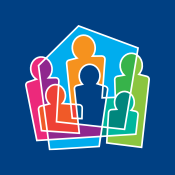May is National Foster Care Month, a time to recognize and celebrate the foster parents, volunteers, mentors, organizations, policymakers, and most importantly, the children in the foster care system. National Foster Care Month is also an opportunity to bring awareness to the need for incredible foster parents, volunteers, and advocates, especially for older children. Consider stepping forward today and change the course/direction of a child’s life forever.
There is no time like the present to become a foster parent. Once you have signed up for foster care classes, done extensive training, learned as much as you could about mentoring and welcoming a teen into your home, there is just one more step: preparing your home. When you receive the call for a youth to temporarily be placed into your home, we want to make sure that your house is prepared for the most comfortable transition period possible for you and the child you will be fostering.
Babyproof Your Home (No Matter The Age)
Babyproofing your home is a given when welcoming a foster child into your home, but did you know that you will also need to take precautions with older children? Never assume a child of any age knows the difference between safe and dangerous household item – think heavy objects, electrical outlets, appliances, etc. You have taught your children the difference between what is appropriate to play with/touch and what is not. We can never assume the children coming into your home did get that kind of training.
Babyproofing includes giving your home a thorough clean, locking up cleaning supplies and other toxic substances, securing heavy appliances, placing safety gates around staircases, and placing safety caps on all outlets.
Keep Your Foster Child’s Room Simple
We get it – it is completely normal to want to provide these children entering your home with a beautifully decorated room and a lot of toys to play with, but that risks overstimulating them. When you are not sure what the foster child is used to, keep the room very simple, with muted colors and a few toys, and once that child is settled in, work from there.
Flexible Sleeping Arrangements
Any child will likely have trouble sleeping in a new environment, and this certainly holds true for many who are used to sleeping in a room with other children. To make the child’s transition smoother, you can, for very young children, move their crib to your bedroom, or for older boys and girls, place a daybed into his or her room. Then, after the youngster has settled in, you can go back to your normal sleeping arrangements.
Thinking of becoming foster parents? Contact Nebraska Children’s Home Society Today.
Make the most of this time to prepare yourselves. Try joining workshops and training sessions specially designed for foster parents. And even before placement day, start researching about services like support groups and family counseling. Nebraska Children’s Home Society offers programs and foster care classes that provide families with accessible education and support. Fostering will always be full of surprises, but there’s no such thing as overpreparation when it comes to being a foster parent.
To learn more about becoming a foster parent, contact fostercare@nchs.org or call 402.659.9996.
Related Blogs
Make a Difference: Join NCHS's Foster Parent Information Meetings
Debunking Foster Care Myths
Helpful Links
© 2025 Nebraska Children’s Home Society. Site by Red Branch Media, Inc.

